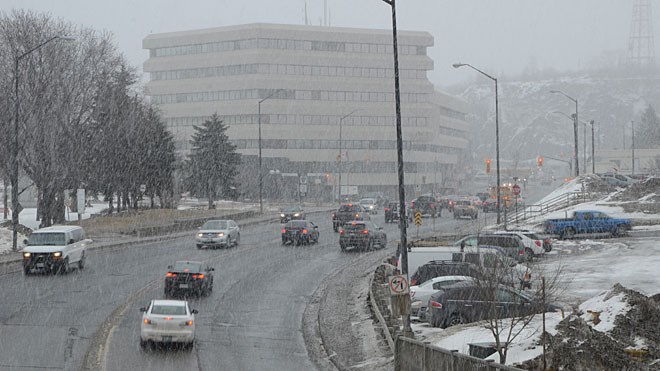Historic and record-breaking weather from the first week of November has been quickly giving way to cooler temperatures and there are flurries in the forecast for as early as Friday.
If you don't already have your winter tires on your vehicles, now would be a good time, and the Sudbury OPP are reminding motorists to take extra care and preparation this winter driving season.
Being prepared for safe winter driving means changing the way you drive during the winter months. The leading cause of multi-vehicle collisions and other collisions that occur during the winter is poor driving, not poor driving conditions, say police.
Those who patrol the roads say drivers play an important role in keeping roads safe by slowing down, staying alert, and staying in control.
Valley Driver Training instructor Shelley Moir says that speed and space are the two biggest factors to take into account when driving in snowy or icy conditions.
“The average amount of time you want to allow yourself in ideal conditions is three seconds,” said Moir. “When it's snowy out, you need to double that to six seconds and if it's icy you should be tripling that to up to nine or 10 seconds.”
Moir says that speed and space go hand in hand and if you're allowing yourself enough space you will be driving at a safe speed.
“You should also be doubling your distances for when you're slowing down approaching a corner or a stop light,” said Moir.
Make a habit of using a full set of headlights every day while driving during the winter months; daytime running lights are not as bright and do not engage your rear tail lights, making it difficult for drivers behind you to see you.
Plan ahead and be prepared for your trip. The OPP encourages motorists to use the MTO's Ontario 511 and traveller information service for 24/7 access to road information on provincially maintained highways.
You should also be sure to have a roadside emergency kit in case you do find yourself stuck in a ditch or snowbank.
Be sure to check out the NorthernLife.ca instructional video on how to assemble your emergency kit.
Join Sudbury.com+
- Messages
- Post a Listing
- Your Listings
- Your Profile
- Your Subscriptions
- Your Likes
- Your Business
- Support Local News
- Payment History
Sudbury.com+ members
Already a +member?
Not a +member?
Sign up for a Sudbury.com+ account for instant access to upcoming contests, local offers, auctions and so much more.
